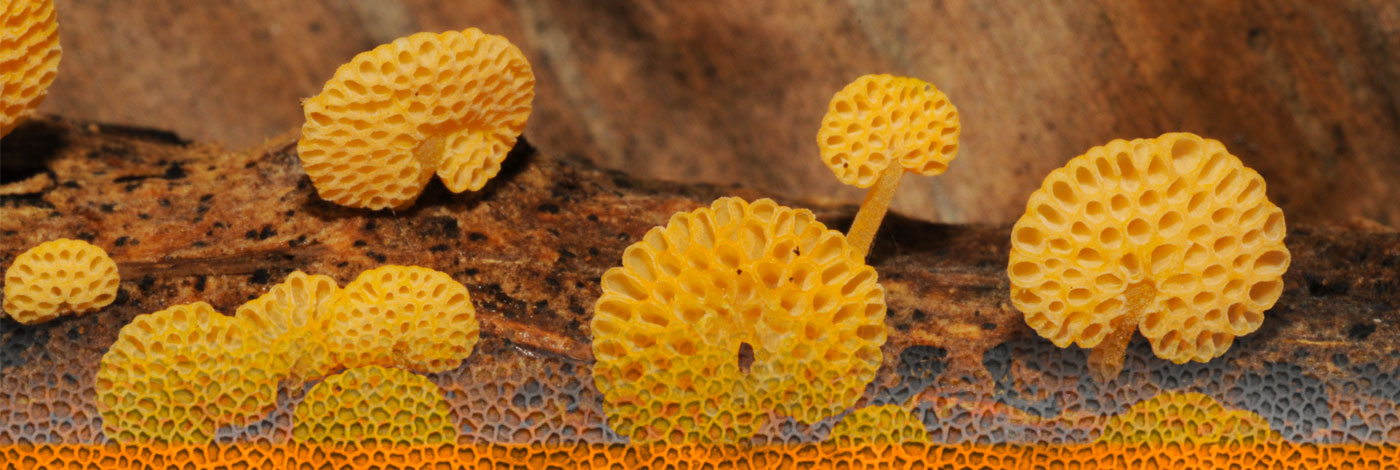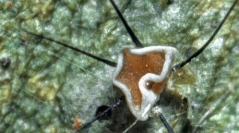

 Cryptogamie, Mycologie
45 (8) - Pages 83-99
Cryptogamie, Mycologie
45 (8) - Pages 83-99Results of phylogenetic analyses are often not translated into formal classifications, because only a portion of the taxa have been sequenced, making the placement of the remaining taxa unclear. This is the case for Gomphillaceae Walt. Watson ex Hafellner, which currently includes 422 accepted lichenized and 18 lichenicolous or fungicolous species, with only 27% having sequence data available. A separate, expanded phylogeny of the family recognized at least 19 further genus-level lineages, in addition to the 27 genera thus far distinguished, for a total of 46, making it necessary to reassess generic placement of a large number of non-sequenced species and to test the stability of the newly proposed classification. In the present study we applied the phenotype-based phylogenetic binning approach to address this problem. We selected 310 taxa, leaving out most species of Gyalidea Lettau ex Vězda and part of Gyalideopsis Vězda and Gyalectidium Müll. Arg., because the phylogenetic framework was either not yet well established (Gyalidea, Gyalideopsis) or the genus was well-defined phenotypically (Gyalectidium). Of the 310 selected species, 72 had sequence data available and served as reference taxa. The binning analysis for the 238 remaining taxa for which no molecular data were available placed 157 taxa (66%) with absolute support (100%) into a single node in the reference tree. Further 35 taxa appeared on two or more alternative nodes but had at least 90% support for one of these nodes. Another 24 taxa had between 70% and 89% support for a given node, resulting in a total of 216 out of 238 taxa (91%) with a supported placement in the tree. Of these, 181 were placed within one of the 46 genus-level lineages, whereas 35 clustered with unnamed nodes, indicating further, potentially unrecognized genera. These mostly included non-foliicolous species of Gyalideopsis and relatives for which no sequenced taxa were in the molecular reference tree. Three further species of Gyalideopsis were placed with the outgroup. Most of the placements obtained through phylogenetic binning were consistent with anticipated placements from earlier studies. Only for a small portion of the taxa (about 10%), the binning results were in conflict with their current or previously predicted placement.
Foliicolous lichens, phenotype data, molecular data, phylogenetic binning, maximum likelihood